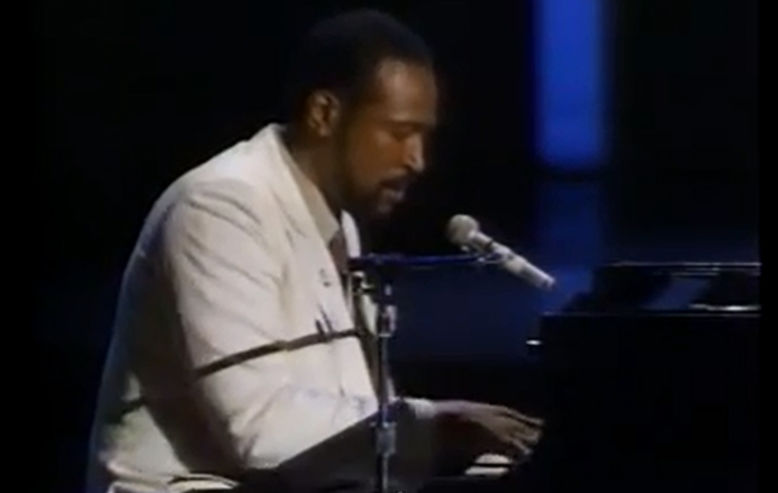This article is from our friends at Trunkworthy
1983′s Motown 25 TV special was when we first saw Michael Jackson moonwalk, but it was Marvin who masterfully brought the night back down to earth.
He was Motown’s best-selling solo act of the ’60s. In the ’70s, he expanded the boundaries of soul music with What’s Going On and reset them all over again with Let’s Get It On. But Marvin Gaye’s career hit its unlikely peak in the early months of 1983.
After years of commercial and critical neglect that hit bottom with the former “prince of Motown” living out of a beached bread van while R&B moved on without him, Gaye managed to clean up, rediscover his muse, and stage a comeback too few thought he was capable of. The first three months of 1983 saw “Sexual Healing” in the Top 10, Marvin picking up his first-ever Grammy Awards, and delivering a game-changing reinvention of our national anthem that moved the NBA’s baddest ballers to tears. The final triumph of Marvin’s incredible comeback — and, tragically, his life — came just a month later, on the stage of the Motown 25 TV special.
Marvin was no doubt feeling a bit cocky that night, showing up to his ex-label’s birthday party with the world at his feet, and you can see it in his sly smile. Was he going to plug his current hit? Keep the good-time nostalgia of the night going with a finger-poppin’ take on “How Sweet It Is” or “I Heard It Through The Grapevine”? Both would be reasonable expectations, but if Marvin Gaye ever did what was expected of him, he’d have died a footnote rather than an icon. Instead, on a show carefully packed with show-stopping moments, Marvin actually stopped the show. He sat alone at a grand piano, the stage dark behind him, and glanced out to the audience as if we were all stragglers at closing time with nowhere else to go.
He spoke softly, delivering a sleepy-eyed sermon that recalled the entire history of Black music in America. As he spoke, he softly tickled the keyboard, teasing out something that drifted from uptown jazz to gutbucket blues to storefront gospel and back again—basically the component parts of the “Motown Sound” channeled through Duke Ellington. He invoked Bessie Smith, Louis Armstrong and Ethel Waters. Church. Slavery. Civil Rights Marches. The same way Gaye yanked Motown’s head out of the sand with What’s Going On, he wasn’t going to let their anniversary celebration ignore the history and the struggles that allowed Motown to happen in the first place. By the time he stood up to deliver a potent, pleading, and masterful performance of “What’s Going On,” he once again reclaimed his role as the label’s conscience, and made Motown grow up all over again.









